Trick-or-treating is a Halloween tradition where people in costumes travel house-to-house on October 31st, requesting "treats" (usually candy) with the phrase "trick or treat." The 'trick' is a playful threat of mischief if no treat is given. Houses signal participation by displaying decorations or turning on porch lights, sometimes leaving treats out for self-service.
1911: Early example of "guising" in North America
In 1911, a newspaper in Kingston, Ontario, Canada, reported children going "guising" around the neighborhood, marking an early instance of the practice in North America. This event shows the early roots of what would become trick-or-treating.
1911: First reference to "guising" in North America
In 1911, the first reference to "guising" in North America occurred. This event marks one of the earliest known instances of this practice on the continent.
1915: Reference to ritual begging on Halloween
In 1915, another reference to ritual begging on Halloween appeared, although the specific location is unknown. This event is an early example of the practices that would evolve into modern trick-or-treating.
1917: Early use of "tricks or treats"
In 1917, the earliest known case of "tricks or treats" was recorded in The Sault Daily Star in Sault Ste. Marie, Ontario. This event is a variant of the phrase "trick or treat!" and highlights the phrase's early evolution.
1917: First recorded use of "trick or treat!"
In 1917, the interjection "trick or treat!" was first recorded in the Canadian province of Ontario. This phrase, a request for sweets with the implication of a prank if not provided, marked an early stage in the evolution of the now-common Halloween tradition.
1919: Publication of 'The Book of Hallowe'en'
In 1919, Ruth Edna Kelley wrote 'The Book of Hallowe'en,' the first book-length history of the holiday in the United States. The book references souling in the chapter "Hallowe'en in America", highlighting the study of old traditions at the time.
1920: Kelley's insight into Hallowe'en customs in America
In 1920, Ruth Edna Kelley, living in Lynn, Massachusetts, a town with a high immigrant population, observed that "All Hallowe'en customs in the United States are borrowed directly or adapted from those of other countries".
1921: "trick or a treat" in Chatsworth, Ontario
In 1921, the phrase "trick or a treat" was found in Chatsworth, Ontario, showcasing an early variation of the 'trick or treat' phrase.
1922: "treat up or tricks" and "treat or tricks" in Edmonton, Alberta
In 1922, variations like "treat up or tricks" and "treat or tricks" were used in Edmonton, Alberta, illustrating the evolving language around Halloween traditions.
1924: "treat or trick" in Penhold, Alberta
In 1924, the phrase "treat or trick" was recorded in Penhold, Alberta, highlighting the regional variations of the Halloween custom's language.
1928: First appearance of "trick-or-treat" in the United States
In 1928, the term "trick-or-treat" first appeared in the United States, marking an early stage in the adoption of the practice in that country.
1939: First known use of "trick-or-treat" in a national publication
In 1939, the first known use of the term "trick-or-treat" in a national publication occurred. This event helped spread awareness of the practice across the United States.
1940: Trick-or-treating primarily in the United States and Canada
By 1940, almost all uses of the term "trick-or-treat" were from the United States and Canada. This shows the regional concentration of the early adoption of the custom.
1942: World War II sugar rationing begins
In April 1942, World War II sugar rationing began, which stalled the spread of trick-or-treating. This event shows the impact of external factors on the growth of the tradition.
1946: Trick-or-treating on 'The Baby Snooks Show'
In 1946, trick-or-treating was featured on a Halloween episode of the network radio program 'The Baby Snooks Show'. This event demonstrates one of the earliest integrations of the tradition into popular media.
1947: End of sugar rationing after World War II
In June 1947, sugar rationing ended after World War II. The end of this rationing allowed trick-or-treating to spread again.
1947: National attention to trick-or-treating in children's magazines
In October 1947, the children's magazines Jack and Jill and Children's Activities gave early national attention to trick-or-treating. This coverage marked an increase in the visibility and popularity of the custom.
1948: Trick-or-treating on 'The Jack Benny Show' and 'The Adventures of Ozzie and Harriet'
In 1948, Halloween episodes of the network radio programs 'The Jack Benny Show' and 'The Adventures of Ozzie and Harriet' featured trick-or-treating. This event shows the tradition's increasing integration into popular culture.
1948: Madison Square Boys Club protest against begging
In 1948, members of the Madison Square Boys Club in New York City carried a parade banner that read "American Boys Don't Beg" for Halloween. This event shows that some children protested trick-or-treating, viewing it as a form of begging.
1950: UNICEF starts Trick-or-Treat for UNICEF program
In 1950, UNICEF started a program called Trick-or-Treat for UNICEF, in which trick-or-treaters ask people to give money for the organization, usually instead of collecting candy. This event provided an alternative to traditional trick-or-treating.
1951: Trick-or-treating in Peanuts comic strip
In 1951, trick-or-treating was depicted in the Peanuts comic strip, indicating the custom's growing presence in American popular culture.
1952: Trick-or-treaters besiege Ozzie and Harriet
In 1952, Ozzie and Harriet were besieged by trick-or-treaters on an episode of their television show. This event is further evidence of the tradition's pervasive presence in American life.
1952: Trick-or-treating portrayed by Walt Disney
In 1952, Walt Disney portrayed trick-or-treating in the cartoon 'Trick or Treat'. This portrayal signifies the firm establishment of the custom in popular culture.
1953: UNICEF's first national campaign for trick-or-treating fundraising
In 1953, UNICEF first conducted a national campaign for children to raise funds for the charity while trick-or-treating. This event linked trick-or-treating with charitable giving.
1966: "tricks or treats" in 'It's the Great Pumpkin, Charlie Brown'
In 1966, the variant "tricks or treats" was used in the television special 'It's the Great Pumpkin, Charlie Brown,' showing how earlier forms of the phrase persisted in popular culture.
2005: Report on adult and child participation in Halloween activities
In 2005, the National Confectioners Association reported that 80 percent of adults in the United States planned to give out confectionery to trick-or-treaters, and that 93 percent of children, teenagers, and young adults planned to go trick-or-treating or participate in other Halloween activities. This report underscores the continued popularity of trick-or-treating in the 21st century.
2006: Increasing popularity of "trunk-or-treat" events
By 2006, city or community group-sponsored trunk-or-treat events had become increasingly popular, showing a shift in Halloween activities to be more inclusive.
Mentioned in this timeline
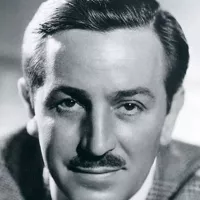
Walter Elias Disney was a highly influential American animator film...

Chicago is the most populous city in Illinois and the...
Canada is a North American country the second largest in...
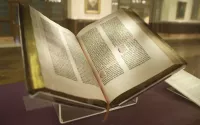
Books are a means of storing information as text or...
Massachusetts officially the Commonwealth of Massachusetts is a state located...
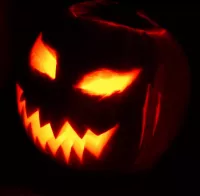
Halloween is an annual celebration on October st preceding All...
Trending
The Lakers Suns rivalry is a long-standing NBA competition marked by intense playoff matchups Beginning in the Lakers dominated the...
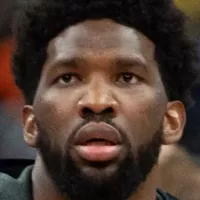
Joel Embiid a Cameroonian-American professional basketball player for the Philadelphia ers is a dominant force in the NBA Drafted third...

7 months ago George Wendt, 'Cheers' Star, Remembered Fondly After Death; Sudeikis Shares Memory

5 months ago Kyrie Irving Claims Bill Gates Owns Most US Land and Water, Calls It Weird
25 days ago Ryan Nembhard's impactful return and career-high assists highlight his Mavericks presence.
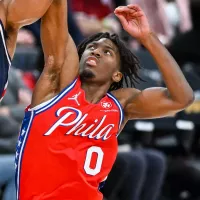
Tyrese Kendrid Maxey known as The Franchise and Mad Max is a professional basketball player currently with the Philadelphia ers...
Popular
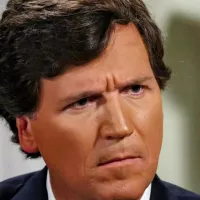
Tucker Carlson is an American conservative political commentator known for...

Candace Owens is an American conservative political commentator and author...

XXXTentacion born Jahseh Dwayne Ricardo Onfroy was a controversial yet...
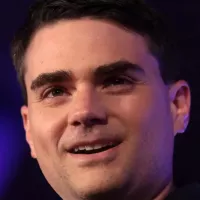
Ben Shapiro is a prominent American conservative political commentator media...
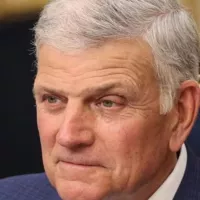
William Franklin Graham III commonly known as Franklin Graham is...

John F Kennedy JFK was the th U S President...
